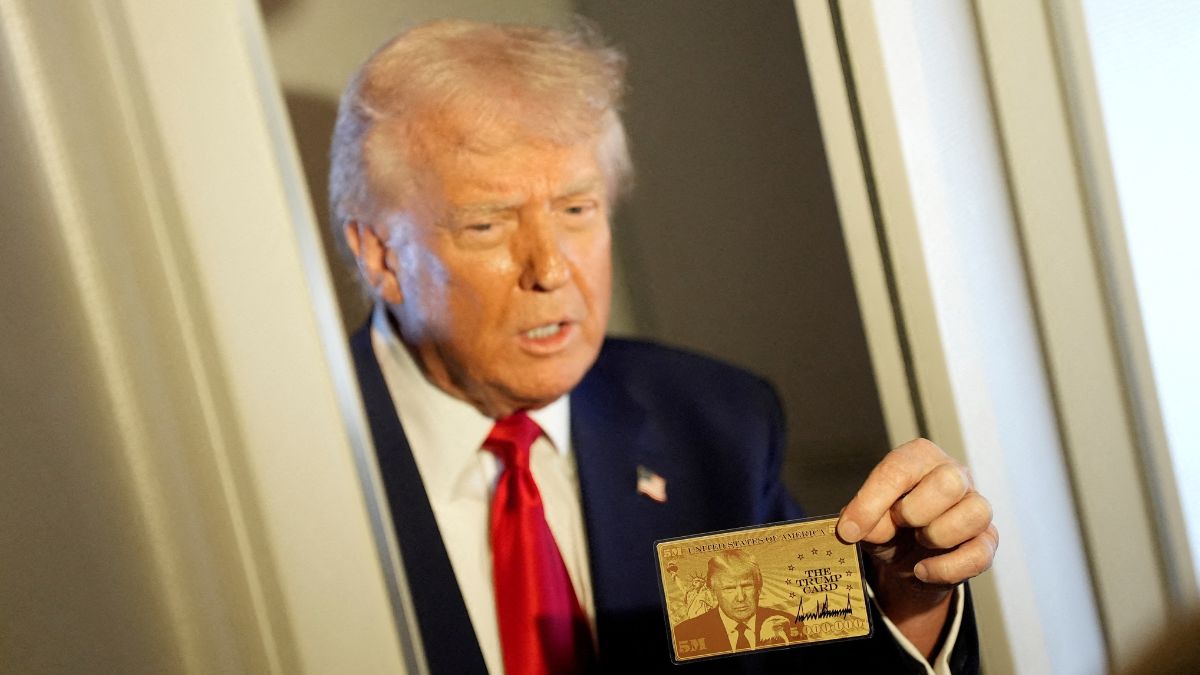When US President Donald Trump announced a new round of tariffs on April 2, while speaking in the White House Rose Garden, he said they were about fairness. He told the crowd that his new plan would put “reciprocal tariffs on countries throughout the world.” He explained that reciprocity means treating other countries the same way they treat the US.
But many trade experts and economists say these tariffs are not really reciprocal in any meaningful economic way. Instead, they believe the plan is based more on the idea of reducing trade deficits than on actual fairness or balance.
Trump’s plan, which some people have called “Liberation Day” tariffs, included two parts. First, there was a 10 per cent tariff on almost all imports, except those from Mexico and Canada. Second, there was a tiered system of what were called reciprocal tariffs. These were based on a formula that many economists have criticised. They say the formula is not only economically wrong but also doesn’t really consider the actual trade barriers used by other countries.
Disproportionate levies: Higher than their counterparts
Trump said the new tariffs were meant to match what other countries charge the US, but information from the World Trade Organisation (WTO) and several economists shows that’s not true. The new tariffs are not only uneven, but in many cases much higher than the ones other countries place on American products.
Although Vietnam faces a 46 per cent tariff, WTO data from its Tariff and Trade Data portal shows that Vietnam’s average tariff on US imports is just 9.4 per cent and the weighted average — which adjusts for different types of products — is only 5.1 per cent. According to DW, officials in Vietnam reacted to the US tariffs by offering to remove all tariffs on US goods. But Trump’s trade adviser, Peter Navarro, rejected this offer. He said the real problem wasn’t tariffs, but things like non-tariff barriers, such as value-added taxes and claims that Chinese goods were being sent through Vietnam. Still, Navarro didn’t give any evidence and these extra issues weren’t part of the formula used to set the tariffs.
Impact Shorts
More ShortsChina also faced even tougher tariffs. DW reported that US tariffs on Chinese goods went up to around 75 per cent, while China’s tariffs on US goods were at 56 per cent. CNN added that some Chinese goods are now being taxed at rates as high as 104 per cent. China responded by raising its own tariffs by 34 per cent, but the US government continued with its policy, saying the imbalance made sense.
Instead of creating fairness, the tariffs actually give a big advantage to the US — at least in terms of the numbers — and ignore the bigger economic effects.
Flawed formula
According to DW, the White House used a specific method to calculate the tariff rates. They took the US trade deficit with a country, divided it by the value of imports from that country, and then multiplied that number by one-half.
Doug Irwin, a senior fellow at the Peterson Institute for International Economics, told DW that this formula completely ignores the real tariffs other countries place on US goods. He explained that it doesn’t matter whether a country has high or low trade barriers — the formula only punishes countries based on how much more they sell to the US than they buy from it. Irwin believes the US is using trade deficits to stand in for unfair trade practices, which he says is not only economically wrong but also a poor strategy.
This flawed formula has caused the US to take harsh action even against countries that already have free trade agreements with it. Irwin pointed out that countries like Chile, Australia, Peru and South Korea — all of which have official deals that keep tariffs low or at zero — still got hit with the new tariffs.
Objective not clear
Besides the confusing math and unfair application, many experts think the tariffs show a bigger problem: the US government doesn’t seem to have clear economic goals. According to DW, Trump’s motivation seems to come more from his long-held belief that the US is being “ripped off” in global trade, rather than from a real push for fair trade.
CNN’s Elisabeth Buchwald reported that Trump’s team often ignored offers from other countries to remove tariffs on American products. Instead, they focussed on non-tariff issues like tax systems, labour rules and currency manipulation.
The economic effects are already being felt. CNN mentioned a report from the nonpartisan Tax Foundation, which says the new tariffs could cost American consumers an extra $2,100 per year. Analysts at JPMorgan have raised the chance of a global recession to 60 per cent by the end of the year if these tariffs continue as they are. Goldman Sachs also increased its prediction for a US recession and warned that stagflation could happen — a situation where prices go up while the economy slows down.
Tariffs by another name
By calling April 2 “Liberation Day,” Trump likely wanted to present his trade policy as a moment of economic freedom. However, the tariffs are not truly reciprocal. The formulas used to create them are seriously flawed and the goals of the policy are unclear at best. Instead of carefully fixing trade imbalances with thoughtful policies, this approach seems more like economic punishment based on personal beliefs.


)

)
)
)
)
)
)
)
)



